Florida’s Space Coast is a sea turtle’s paradise, with 72 miles of coastline, there’s plenty of space for these incredible marine animals to make their nests and lay clutches upon clutches of eggs. Sea Turtle season is a particularly exciting but sensitive time on the Space Coast. In 2021 more than 32,000 nests were counted on the beaches of Brevard County alone! From the northern-most reaches of the Canaveral National Seashore to the Beaches of the Sebastian Inlet, visitors and residents must be on high alert to protect these turtles and their nests. Here are 5 things you need to know about Sea Turtle Season.
1) When and What is Sea Turtle Season?
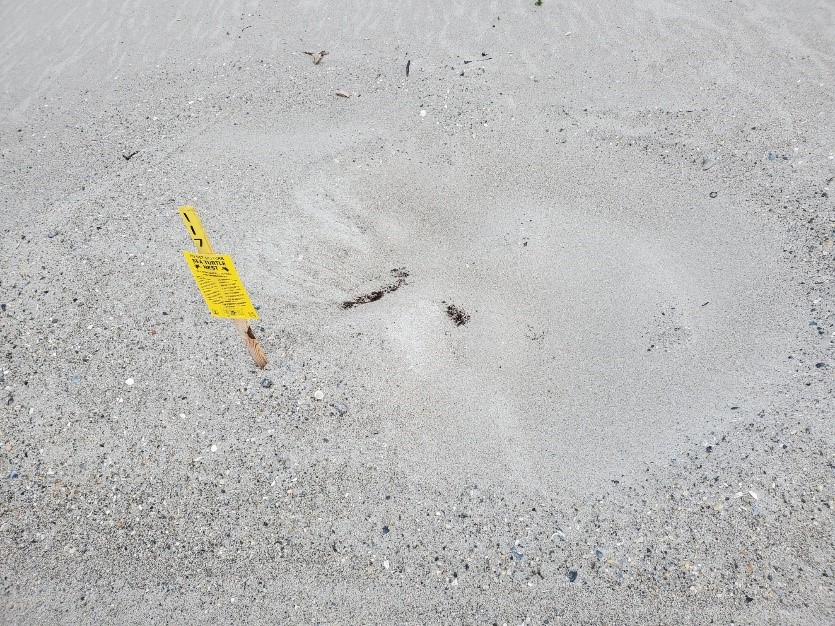
Sea turtle season begins March 1 and goes through October 31.
From nesting to hatching and their mad dash to the sea, the process of nesting is incredible to witness. Every year Leatherbacks, Loggerheads & Green Sea Turtles (and sometimes a wayward Kemps Ridley) return to our beaches to lay their clutches of eggs. Depending on the species these nests will be up against the dunes, or right in the middle of the beach. Organizations like the Sea Turtle Preservation Society and others mark these nests with wooden stakes, keep your eyes out for them on your beach days and be very careful not to disturb t
You can tell a sea turtle has nested or attempted to nest, by the telltale tracks they leave in the sand. From the massive whorls of the Leatherbacks to the choppy strides of a Loggerhead and the “dune wrecker” nests of the Greens, you’ll find these tracks most commonly on sunrise strolls before the tide and winds have a chance to erase them from the shoreline.
As the season rolls on, your chances of seeing hatchlings make their way to sea increase. Each species has a different egg incubation period (the time it takes the turtle to hatch), but generally, it can take anywhere between 45-75 days. Hatchlings tend to emerge from their nests in the dark and use the moonlight’s reflection on the crashing waves to guide their return (which is why light pollution is so bad for them). An interesting fact is that it’s the temperature that determines the sex of the hatchlings. Warmer temperatures will result in female turtles, whereas colder temperatures produce males. Baby sea turtle tracks are also exciting to see, but difficult to detect if you don’t know what you’re looking for. Where they emerge from the nest looks kind of like a Ghost Crab burrow, but the tracks will wiggle out to the surf.
2) How Can You Participate in a Sea Turtle Walk?
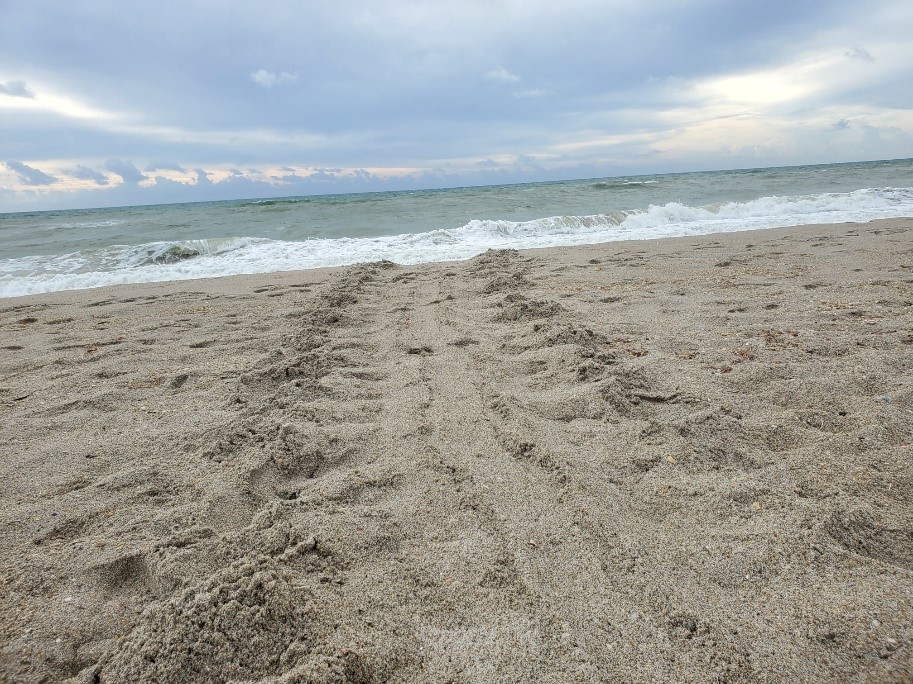
Sea Turtle walks are a great, safe way to witness this phenomenon for yourself. Check out these wonderful Space Coast organizations that offer guided walks on the Archie Carr National Wildlife Refuge, Merritt Island National Widlife Refuge, the Canaveral National Seashore and several highly trafficked beaches in between.
• Friends of Sebastian Inlet State Park: Reservations required
• Friends of the Carr Refuge: Reservations required
• Sea Turtle Preservation Society: Reservations required
• Merritt Island National Wildlife Refuge – Reservations required
• Stella Maris Environmental Research – Reservations required
3) How do You Keep the Sea Turtles Safe?
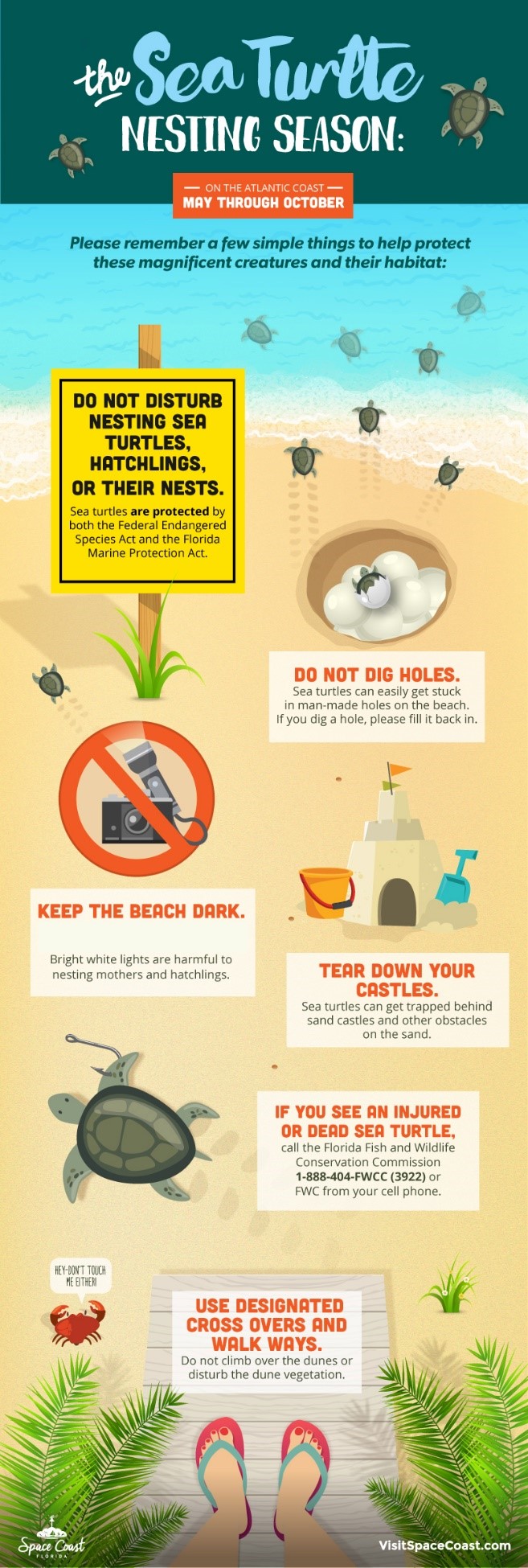
To ensure the safety of the sea turtles, there are specific measures you can take whether you see one on your own or while you are on a turtle walk.
• Do not touch or disturb nesting sea turtles, hatchlings, or their nests.
• If you dig or see a hole in the sand, refill them before you leave the beach.
• Tear down sandcastles when you’re done with them. They become huge obstacles to both nesting and hatching sea turtles.
• Do not walk on the sand dunes. Use designated crossovers and walkways and mind the signs.
• Don’t litter!!! Dispose of ALL trash properly including cigarette butts.
• Lights Out! Lights disorient sea turtles and can cause harm to both nesting turtles and hatchlings. This means no flashlights or phone lights too!
• If you see a sea turtle, whether injured or dead, contact the Sea Turtle Preservation Society at (321) 206-0646, a 24/7 hotline, or the Florida Fish and Wildlife Conservation Commission (FWC) – 1-888-404-FWCC.
4) What Types of Sea Turtles Make the Space Coast Home?
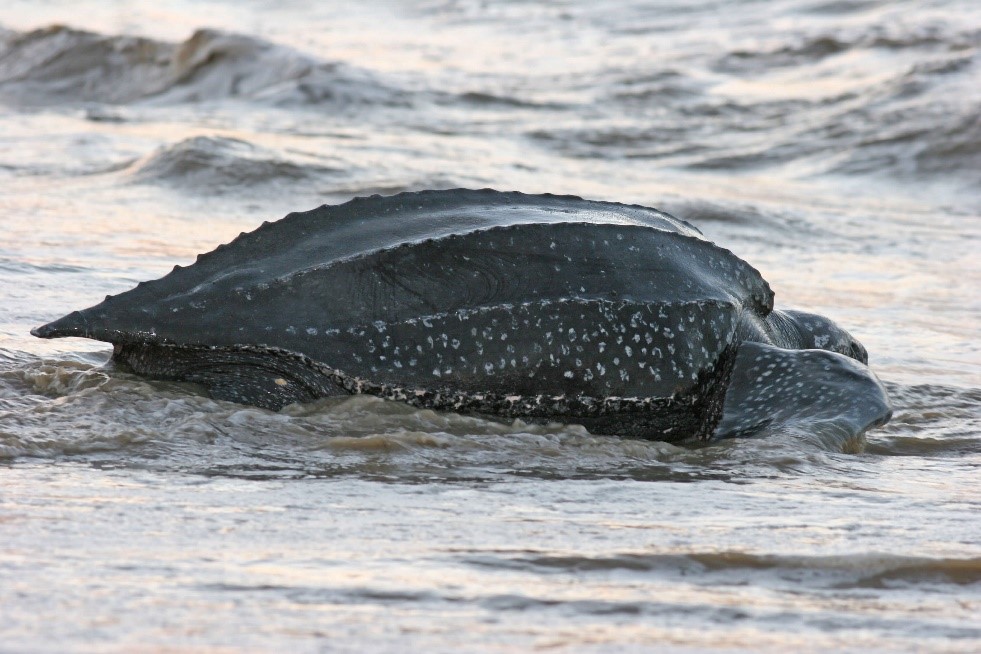
The Loggerhead, Leatherback, and Green Turtles call the Space Coast home. Each species has its own unique features. The Loggerhead is the largest of the hard-shell turtles and is named for its massive head and strong jaws. Its shell is heart-shaped with a reddish-brown color. It is the most common turtle in Florida. The Green Turtle has a wide, smooth shell and is named “Green” because of its body fat, not its shell, which is browner in color. Green turtles have a non-retractable head that are pretty small in comparison to its large shell and can be upwards to 700 pounds. The Leatherback is the largest of all sea turtles at up to 7 feet long and in excess of 1,000 pounds. Leatherbacks take on on the longest migration distances between breeding and feeding at around 3,700 miles each way. The Leatherback is considered a soft-shell turtle because its inky-blue shell is a bit flexible and rubbery to the touch. And every so often, Florida’s Space Coast is graced with the Kemps Ridley Turtle. Kemps Ridley are some of the smallest of the sea turtles only reaching up to 2 feet and no more than 100 pounds. Its shell is hard and greenish-gray while its belly is off-white or yellow. The Green, Leatherback, and Kemps Ridley Turtles are considered endangered species.
5) Where can you get more Sea Turtle Information on the Space Coast?
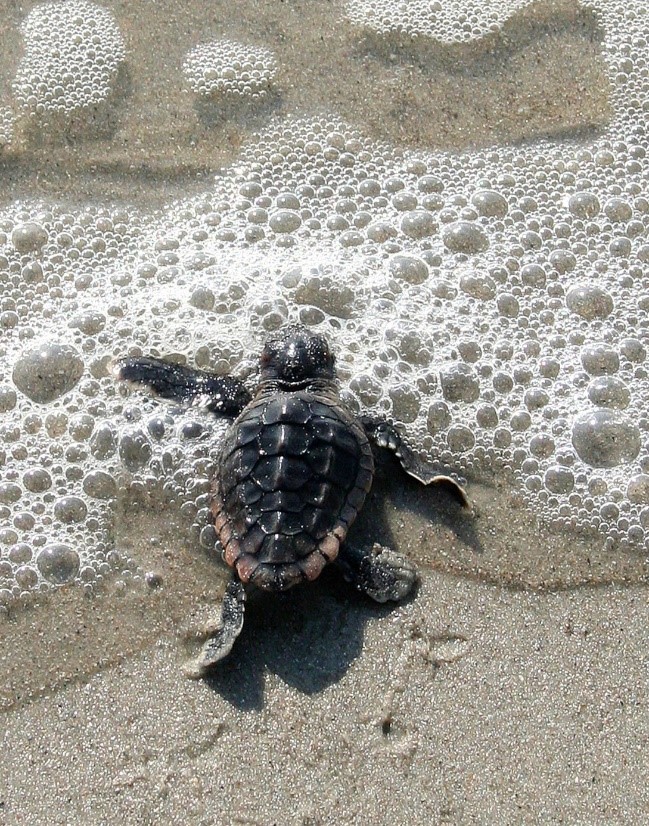
The Sea Turtle Preservation Society (STPS) located in Indialantic has a wealth of information about the sea turtles that make the Space Coast their nesting home. STPS hosts a wide range of events, exhibits, presentations, and, of course, turtle walks in order to educate the public. This is a great way to incorporate a bit of education into your vacation! Plus, you’ll want to stop inside the store and grab a few sea turtle souvenirs. Proceeds allow STPS to continue their incredible work to ensure the safety and preservation of these beautiful sea turtles.
Keep learning about Sea Turtles this season by following the Brevard Zoo, The Sea Turtle Preservation Society, and The Brevard County Barrier Island Sanctuary on Facebook. And when you can start making plans to visit the Space Coast, make sure you schedule a turtle walk on one of our many beaches.
Check out the Space Coast Vacation Planner or the links below to help you discover more ways to relax here on the Space Coast.